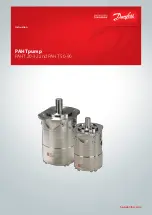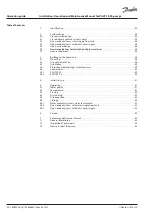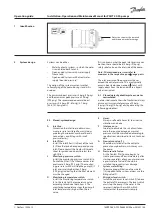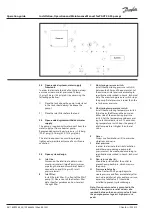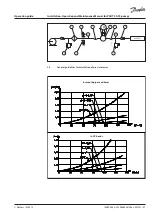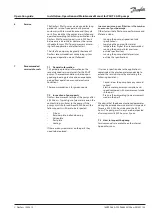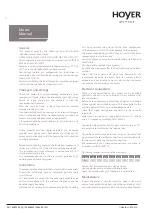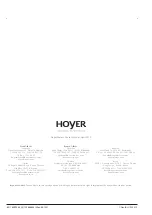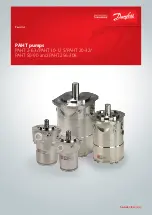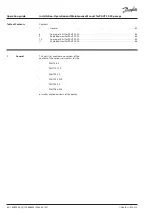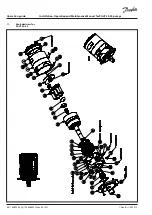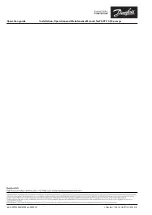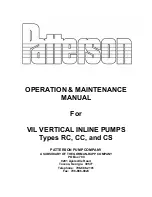
180R9288_AQ109686503100en-001301 | 53
© Danfoss | 2023.12
Operation guide
Installation, Operation and Maintenance Manual for PAHT 20-90 pumps
7.1 General information
This guideline provides information on the
recommended service intervals for the PAHT
pumps. The recommendation is based upon
good engineering practice and on experience
gained from operation even under extreme
conditions.
The recommendation is for guidance only.
7.2 Inspection of pump parts
Danfoss recommends to inspect the pumps after
8,000 hours. Typical signs of wear are seen on the
contact/sliding surfaces in the pumps. If the
pumps must run for additional 8,000 hours, the
following parts will have to be inspected:
•
Pistons
•
Retainer plate, ball and bearing
•
Valve plate
•
Port plate
•
Sealings
If there are any wear marks on the parts they
need to be replaced.
If service inspection due to the application is
complicated, the plant operator can decide to
extend the service interval by evaluating the
following deviations:
•
Sound - does the pump have any unusual
sounds?
•
Electric motor power consumption and
speed compared with measurement made
in the past.
•
Pressure/flow according to measurements
made in the past?
We advise that the above mentioned parameter
during the extended service interval is inspected
for every 500-2,000 hours beyond the 8,000
hours. The pump must in any case be inspected
after maximum 16,000 hours or 2 years.
7.3 How to inspect the pump
Service manuals are available on the internet
hpp.danfoss.com
7.
Recommended
service intervals
6. Service
The Danfoss PAHT pumps are designed for long
periods of service-free operation to provide
customers with low maintenance and life cycle
costs. Provided that the pumps are installed and
operated according to Danfoss specifications, the
Danfoss PAHT pumps typically run 8,000 hours
between service routines. However, the service
schedule for your PAHT pump may vary accord-
ing to the application and other factors.
The life of a pump may be greatly shortened if
Danfoss recommendations concerning system
design and operation are not followed.
In our experience, poor filtration is the number
one cause of pump damage.
Other factors that affect pump performance and
lifetime include:
•
running the pump at speeds outside
specifications
•
supplying the pump with water at
•
temperatures higher than recommended
•
running the pump at inlet pressures
outside specifications
•
running the pump at outlet pressures
outside the specifications.





